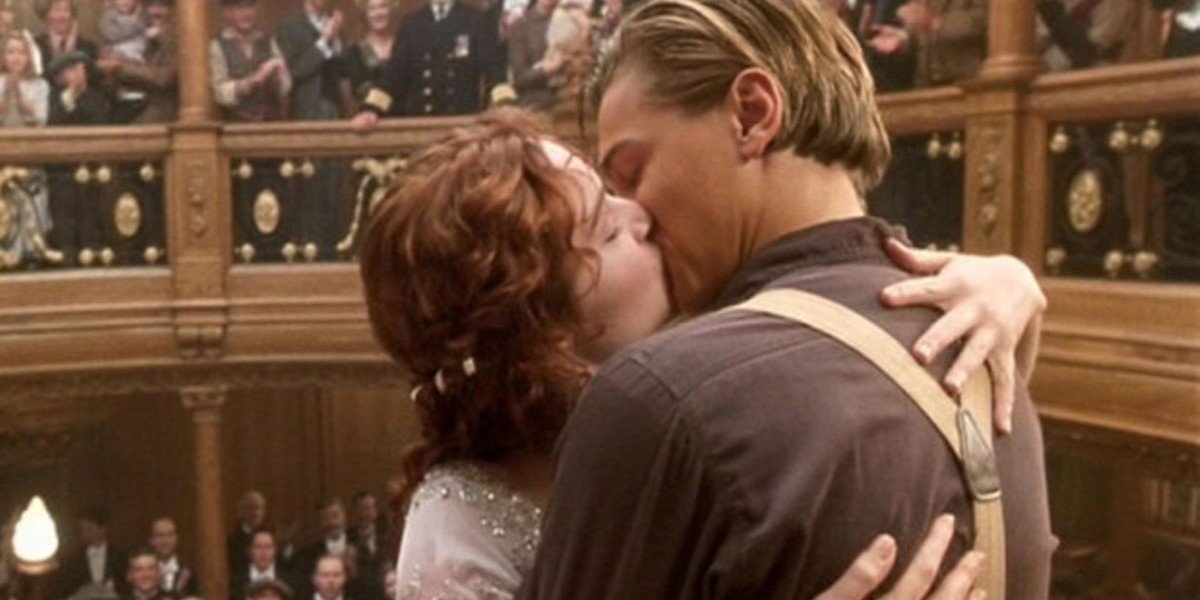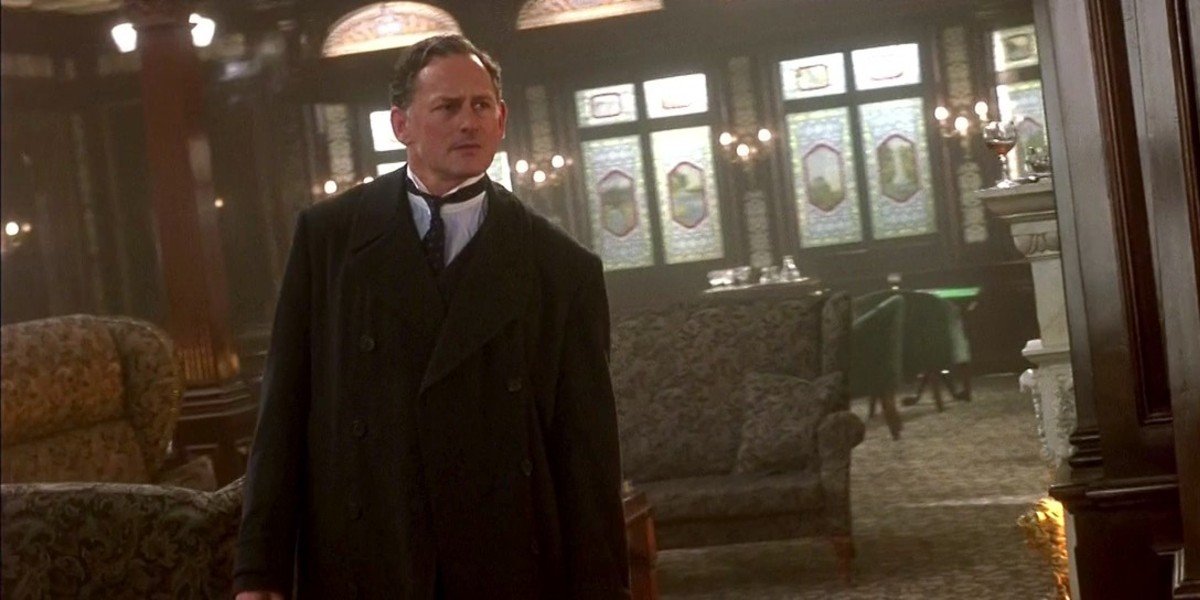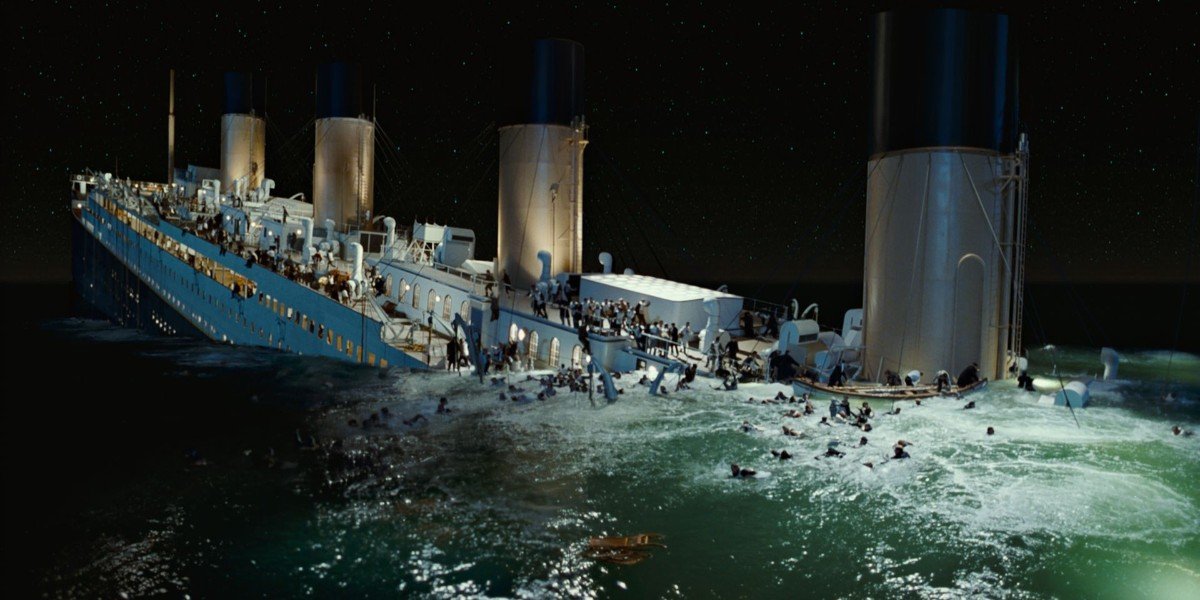Titanic: How Historically Accurate Was The 1997 Movie Starring Leonardo DiCaprio

There's a good chance that you've seen James Cameron's monumental Titanic. The 1997 blockbuster starring Leonardo DiCaprio and Kate Winslet wasn't a sure bet when it went through its enormous, hectic production. Nevertheless, Cameron proved his critics wrong by producing a widely acclaimed, multi-award-winning and extremely lucrative movie that continues to stand as one of the crowning filmmaking achievements of the '90s.
The movie is highly praised for its incredible mix of practical and CG effects, its rousing emotional tenders and its singing romance at the center, but how much is it celebrated for its accuracy? James Cameron went to painstaking lengths to make it extremely accurate to real life. Did those efforts pay off? Let's find out.

Only A Few Details Can Be Confirmed About The Titanic Voyage
It should be noted right off the bat that, ultimately, only so much is known about what exactly happened that night. Since most of the ship's crew and passengers unfortunately sunk to their demise on that cold, devastating night, there are only a few confirmed details about what exactly happened. Meaning it was going to be difficult for the movie adaptation to convey accuracy regarding what it felt like to be on that terrible sea voyage. There are a lot of theories and an endless stream of speculation to be made about the trip, but we'll try to stick to the fact whenever we can in here. But this should be noted at the top.

Jack And Rose (And Their Tragic Love) Were Fictional
It should also be noted early that Jack (Leonardo DiCaprio) and Rose (Kate Winslet) weren't, in fact, actual passengers on the Titanic. Instead, they were characters created by James Cameron to connect us to the real-life story, in order to get a passionate, emotional connection to this historical account. There was no steamy love affair between them, nor was there the love triangle involving Billy Zane's vindictive supporting character. It was a fabrication to give us something that will let us know what it was like to be on this ship and to suffer its grave consequences.

Largely Speaking, The Supporting Characters In Titanic Were Historically Accurate
While the main characters in Titanic were concocted by the filmmaker, James Cameron's attention to accuracy can definitely be seen in some of the prominent supporting characters, many of whom follow what we know about these perished people's shortened lives. For instance, Thomas Andrews (Victor Garber), i.e. the Chief Designer for the Titanic, is seen in the First Class smoking room staring at a painting of the Titanic on the wall. By many accounts, this is accurate to how he died on the ship. Similarly, Molly Brown (Kathy Bates) did help people board lifeboats, worked to keep them calm and tried to get the lifeboats to retrieve as many passengers as possible as the historic ship kept plunging deeper into the dark recesses of the sea.
There is also a scene in Titanic where an elderly couple hold each other's hands on their beds and cry while their room fills with water. This is based on a real-life couple, Isidor Straus (i.e. the owner of Macy's) and Ida Straus, who, according to reports, refused special treatment. His wife did not want to leave him, so they went to their room together, which was their final resting place. It's a touching, quietly humane detail that James Cameron rightfully thought would add emotional tenderness to his gigantic cinematic experience. While we're primarily focused on the tale of Jack and Rose as the ship sinks into the bottom of the sea, Cameron's added touches in these moving moments help bring a fine sense of authenticity.

Some Details In Titanic Were Based More On Theory Than Fact
While James Cameron strived to tell a realistic account, there are some details that appear to be based more on theories pertaining to the Titanic than anything that can be confirmed as accurate and/or official. For instance, there's a noteworthy sequence where many of the third-class passengers are barricaded against their will below the deck, preventing them from reaching the lifeboats and upper deck, in a stark bit of socioeconomic commentary. However, there's very little evidence to support this claim — at least, according to historian Richard Howells (as reported by The Culture Trip). Howells claims that these gates seen in the blockbuster weren't meant for shipwreck necessarily, but rather the prevention of diseases from spreading above.
Your Daily Blend of Entertainment News
Additionally, while there were class tensions, it was highly exaggerated when James Cameron depicts a scene where passengers are shot and killed while trying not to lose their luggage during the ship's sinking. Additionally, when it came to depicting the truth or picking something more emotionally impactful, James Cameron opted for something that plucked at the viewer's heartstrings rather than stayed true to how events had actually unfolded.

The Band Didn't Play "Nearer, My God, To Thee"
One of the most famous scenes in Titanic is when the band decides to play "Nearer, My God, To Thee" as the musicians see their final moments before sinking into the depths of the unforgiving sea. It's a sweet, tender moment that depicts a beauty amid chaos, hoping to find something that captures a sense of calm around the calamity. It's a lovely scene; alas, it's not fully accurate. It's actually copied from 1958's A Night to Remember.
In the moment, there is a similar moment when the band members decide to play one final heartfelt tune, to hopefully allow themselves and their doomed passengers to find some sort of peace before the end is due. According to one survivor on the ship, though, this isn't entirely true to what actually happened in real-life. Instead, the band reportedly played popular ragtime music, but it obviously wouldn't capture the same emotional tone. While James Cameron consulted with historical experts throughout the writing, pre-production and filming process, he opted for a creative touch here.

The Titanic Didn't Exactly Sink The Way It Did In The Movie
This is something that has recently been contested, notably with the movie's 3D re-release back in 2012. In Titanic, the ship splits in half, which is true to what happened to the boat. Then, the bow of the ship starts to sink, while the sterns bobs from about a 90-degree angle before it plunges right into the dark icy cold water below. This sequence famously sees Jack and Rose holding the railing for their dear lives as the ship sinks further into the sea.
While this is mostly true to what is believed to have happened, it's not entirely accurate. By James Cameron's own admission, there was quite likely a moment where this piece of the ship was standing "quite proud" on the water, but it wouldn't be quite as dramatic or suspenseful as it was inside the movie. Ultimately, in this scene, while James Cameron mostly relied on the truth, he opted for a choice that was more emotionally fulfilling than true.
There are other examples to be addressed, but we don't want to get all Neil deGrasse Tyson here and be sticklers for the truth. Suffice to say that when it comes to the realism and accuracy of Titanic, a large part of it is mostly true. Outside of the fabricated romance, the movie does actually capture a lot of real details and subtle touches which should be admired. But there are also some big choices made that don't exactly hold water when scrutinized.
Will is an entertainment writer based in Pittsburgh, PA. His writing can also be found in The Playlist, Cut Print Film, We Got This Covered, The Young Folks, Slate and other outlets. He also co-hosts the weekly film/TV podcast Cinemaholics with Jon Negroni and he likes to think he's a professional Garfield enthusiast.

